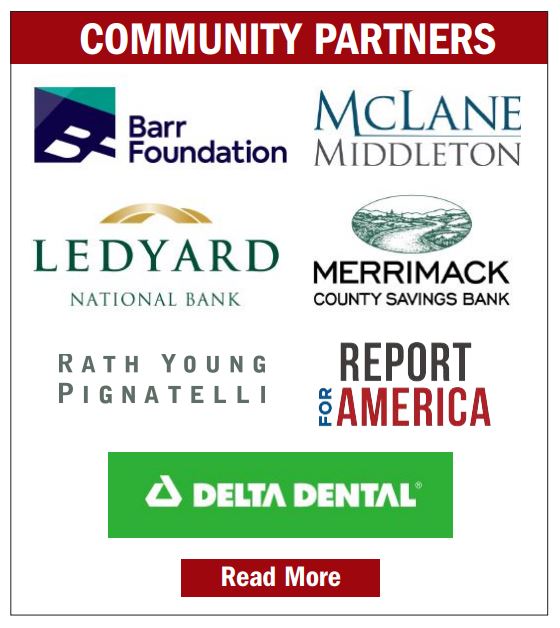‘People deserve to be remembered’: Finding and honoring Concord’s unmarked graves
|
Published: 12-06-2024 2:10 PM
Modified: 12-07-2024 8:31 PM |
After more than a decade, an unusual program to place markers on long-forgotten graves of 686 infants and adults in the former “poor lot” of Concord’s huge Blossom Hill Cemetery, the resting place of people who could not afford family plots, has wound up. But that doesn’t mean the effort has ended.
“There needs to be more. I want to do more,” said Jill Huckins, cemetery administrator for Concord, who created the Adopt-a-Grave program after realizing the extent of the situation in 2012. “I plan to do more.”
The poor lot, more formally known as Common Ground, received the bodies of indigent adults and stillborn babies for several decades starting in the 1880s. It’s not the only such location in Blossom Hill Cemetery: Huckins is eyeing a similar program to mark graves in an adjacent area where people who couldn’t afford plots were buried decades later.
She’d also like to do something for the hundreds of babies buried on the edges of the adjacent Calvary Cemetery, a former Catholic burial ground that has been owned by the city since 1996. Those infants – nobody’s sure how many there are – died before they were baptized and weren’t allowed in consecrated ground.
The impetus for all these programs is the same: “People deserve to be remembered.”
Created in 1860, Blossom Hill Cemetery on North State Street is huge. Including Calvary Cemetery, it covers 75 acres and is the resting place of at least 35,000 people, probably more, Huckins said. The story of the poor lot helps explain why that number is uncertain.
The Common Ground is a small area, just 145 feet by 75 feet, on the cemetery’s southern edge. The casual visitor would notice it only because of an almost complete lack of standing headstones. Instead, it is filled with rows of flat white granite markers bearing a person’s name or the word “unknown” and dates of birth and death. In many cases those two dates are the same, usually marking a stillbirth.
Huckins said that when she started working at Blossom Hill, 19 years ago, little was known about the Common Ground. All the flat markers that had been placed in the past – just a few dozen, it turned out – had sunk and, covered by earth and grass, been forgotten.
Article continues after...
Yesterday's Most Read Articles
That changed in 2011.
“They were putting out sticks for winter plowing and they clonked down on something. We knew it was the common area that was mowed, but that’s it. They dug down and found a white marble marker,” Huckins said. Eventually, workers uncovered a single row of white markers. They had been placed around 1901 on burials that started in 1896, some three decades after the cemetery was created.
“The markers were on that whole first row, by the road. It looks like that’s where the project ended for whatever reason. We dug them all up and put (concrete) foundations under each so instead of being 50 years it might be 150 years before they start to settle down,” she said.
“Then we wondered: if those were underground how many more are there?”
In the summer of 2012 seasonal help “went out and probed every inch of (the Common Ground) to find where all the burials were.” None of these burials appear to have used caskets, presumably because there was nobody to pay for them, but each had been marked with a metal pin. These pins had also sunk over the decades, sometimes as far as three feet underground, but could be found with enough effort.
“They put out a flag stake to represent every burial out there,” Huckins said, showing a photo taken at the end of the summer in which the Common Ground is a sea of vertical sticks. The burials had taken place as close together as possible, sometimes virtually touching. Overall they found 686 graves here and a search of records – often typewritten lists from decades ago, since much of the cemetery’s data has not been computerized – indicate that about 480 of them hold infants.
Soon after, Huckins launched Adopt-a-Grave to put 6-by-12-inch marble markers on the remaining sites. She listed all the information she could find from the cemetery records, including neatly typed pages of names and dates in bound books that have not yet been computerized.
For $100 people could “adopt” a site. In return for paying for a flat white granite marker, they received “adoption papers” thanking them, as well as all the information that Huckins could gather about that particular person.
Finding that information took Huckins not just through many books and papers in the cemetery office but to Concord’s annual reports, old funeral home records, and old news reports from the Monitor and other sources, particularly for abandoned newborns.
“There would be a story: ‘Stillborn found in the grass’; ‘Stillborn found in the railroad station bathroom’ … ‘Two boys were playing in a field and came across a candy box and when they looked inside there was a baby in there,’” she said.
She even went to law enforcement when necessary. “We had the Cold Case unit do research,” she said.
“It’s been a rewarding project. People really got into it,” Huckins said. “The very first one was this lady who picked out two infants for her granddaughters for Christmas, so they would understand that people need to remember, that these (infants) were special to someone.”
Some people chose a site based on the date of birth or death, others based on the name even if they had no known connection. “They’d come in and say, ‘Do you have any Pierces because my family has been here forever.’”
People who adopted one of the 11 graves of an unknown adult or 11 unknown infants sometimes chose names to put on the markers or the statement that they had “become an angel.”
As the years went on the program got quieter, partly because the graves of infants, which were much more popular than the graves of adults, were all taken. Huckins used money from a trust fund established at the start of the Common Ground in the 1890s to pay for markers on the final unchosen sites, and the last of them were installed in the fall.
Although the Adopt-a-Grave program has accomplished its goal, it never had an official ending. There was an official beginning in 2011, when an interfaith service was held to bless the ground where everybody was buried, and Huckins is thinking about some sort of ceremony now that it has wound up.
And that, she says, will be a perfect transition into marking other unmarked graves around the cemetery, both at Calvary Cemetery and in the “pink section” adjoining the Ground, so called because of coloring used to mark it on some maps. That section took indigent burials starting in the 1940s and Huckins isn’t sure when the practice stopped.
“No one should be forgotten,” she emphasized. “No one.’
David Brooks can be reached at dbrooks@cmonitor.com














 Find a tick on yourself? This NH nonprofit wants to see it.
Find a tick on yourself? This NH nonprofit wants to see it. ‘It was painful’: Senate passes state budget
‘It was painful’: Senate passes state budget Finalizing the budget: What to look for in the State House this week
Finalizing the budget: What to look for in the State House this week Bow offers water to Hooksett plant, asks Concord to help fix its supply
Bow offers water to Hooksett plant, asks Concord to help fix its supply
